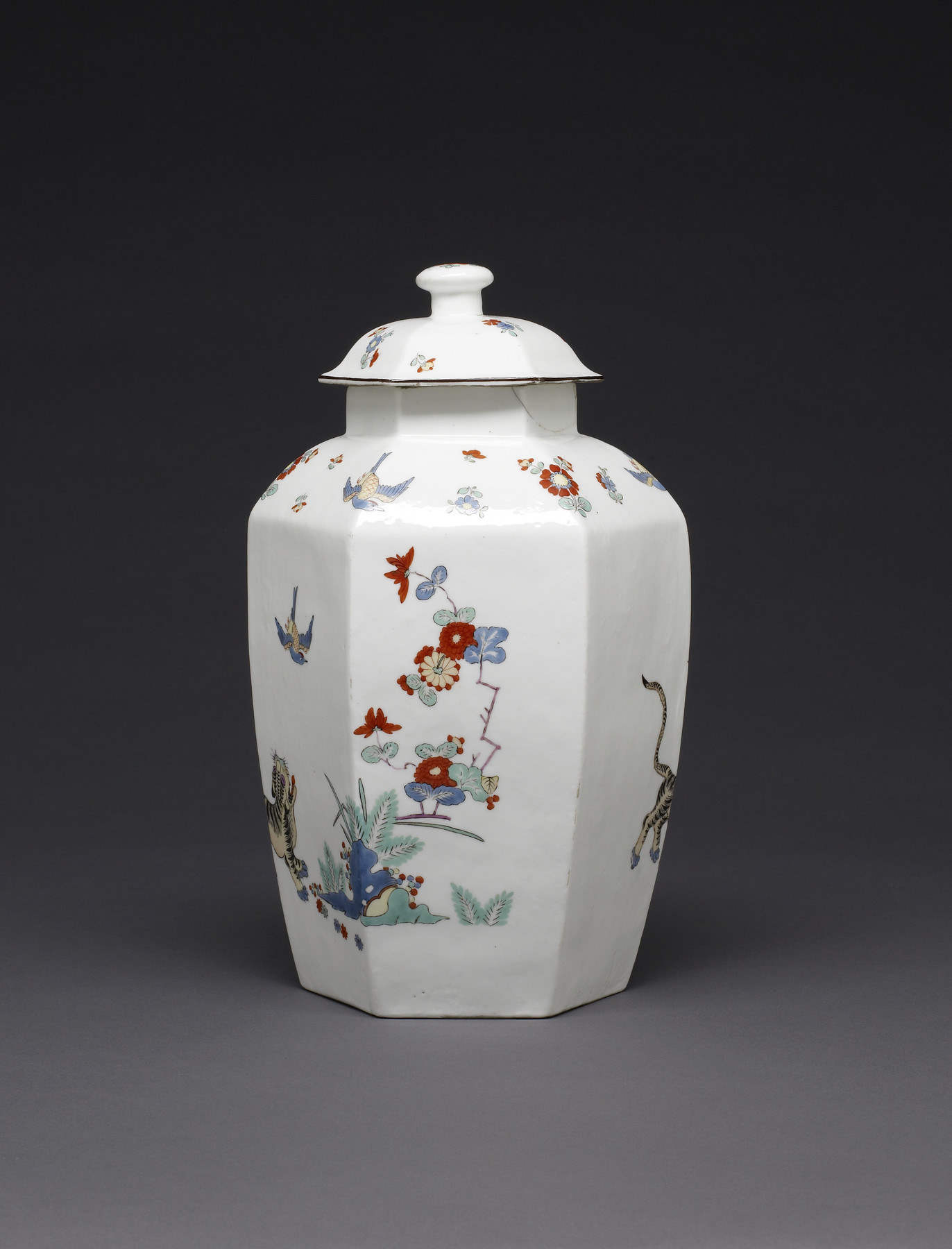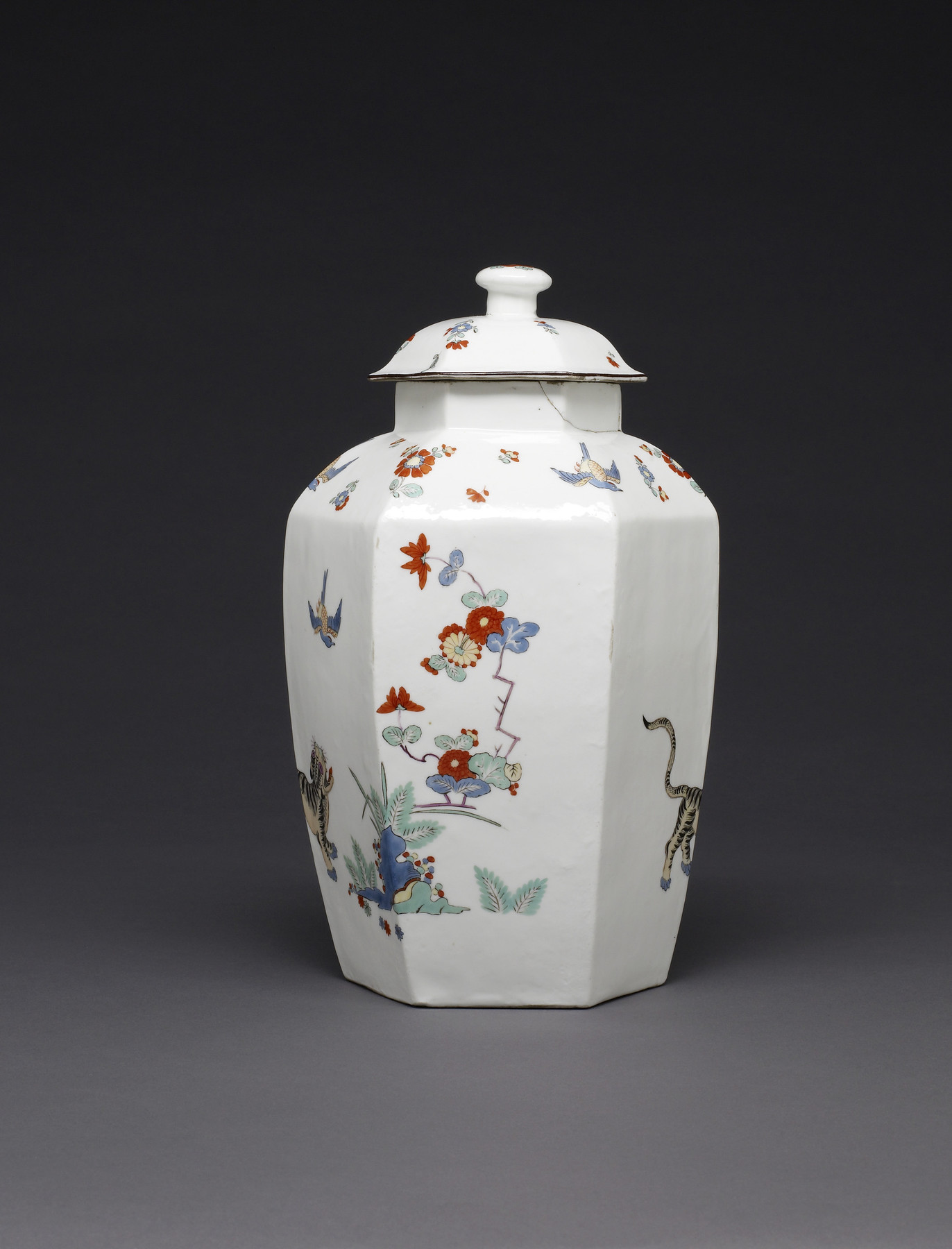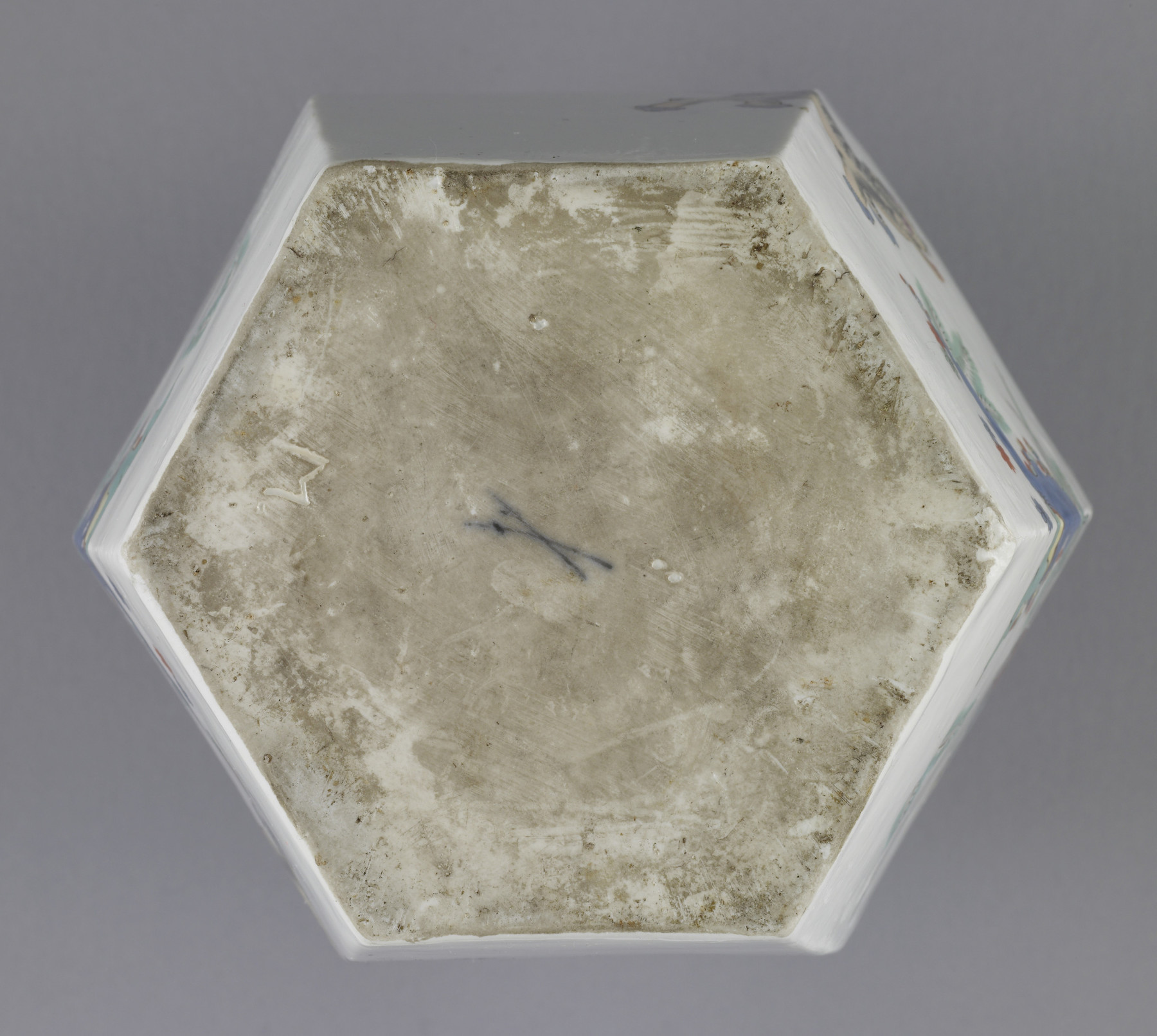Covered Jar
(18th and 19th Centuries )
The invention of Meissen porcelain in early 1709 was a collective achievement that represents an early modern precursor to industrial chemistry and material science. Generally associated with artistic achievement of a high order, Meissen porcelain was also a technological achievement in the development of inorganic, non-metallic materials. Both the hexagonal shape and the enamel decoration of this jar were inspired by Japanese Arita wares with Kakiemon decoration. Augustus II, Elector of Saxony and King of Poland, who founded the Meissen factory in 1710, had a collection of Japanese porcelain, which Meissen copied. In the Japanese Palace, Dresden, the ruler intermixed Japanese and Meissen pieces.
Inscription
Provenance
Provenance (from the French provenir, 'to come from/forth') is the chronology of the ownership, custody, or location of a historical object. Learn more about provenance at the Walters.
Henry Walters, Baltimore [date and mode of acquisition unknown]; Walters Art Museum, 1931, by bequest.
Geographies
Germany, Meissen (Place of Origin)
Measurements
Har with lid: H: 10 13/16 in. (27.5 cm)
Credit Line
Acquired by Henry Walters
Location in Museum
Not on view
Accession Number
In libraries, galleries, museums, and archives, an accession number is a unique identifier assigned to each object in the collection.
In libraries, galleries, museums, and archives, an accession number is a unique identifier assigned to each object in the collection.
48.1468












